Should you choose a panel filter or cone filter upgrade when tuning your car? Let’s get to grips with this age-old question…
There’s no doubt that performance air filters are an all-time modifying staple. In fact, it’s extremely likely that one of these puppies will be one of the very first port of call when you modify your car. There’s lots to love here, too. You get more power in one relatively easy-to-fit package, that’s why performance filters will always be an all-time great basic bolt-on. But then again, there’s always the question; which one is going to be best for your car? But, don’t worry, that’s exactly where we’re here to help.
Let’s take a look at the benefits and disadvantages of the most common types of filter upgrades and weigh up the big one – should you be fitting a performance panel filter, or a whopping great cone.
How does an air filter upgrade work?
When it comes to performance tuning any engine, optimizing the airflow in and out is the main starting point. Getting more air – specifically more oxygen – into the cylinders means more fuel added, resulting in a bigger bang and more power output. No matter the configuration, the job of a performance filter is simple; to let more air flow through more quickly, while still filtering out potentially harmful particles that could be detrimental to the health of the engine.
Standard filters are generally constructed from paper, which is great for filtration, but not ideal for airflow. So, a performance filter using a free-flower material to help you make the gains. For a full rundown of the science, check out our Guide To Air Filters.
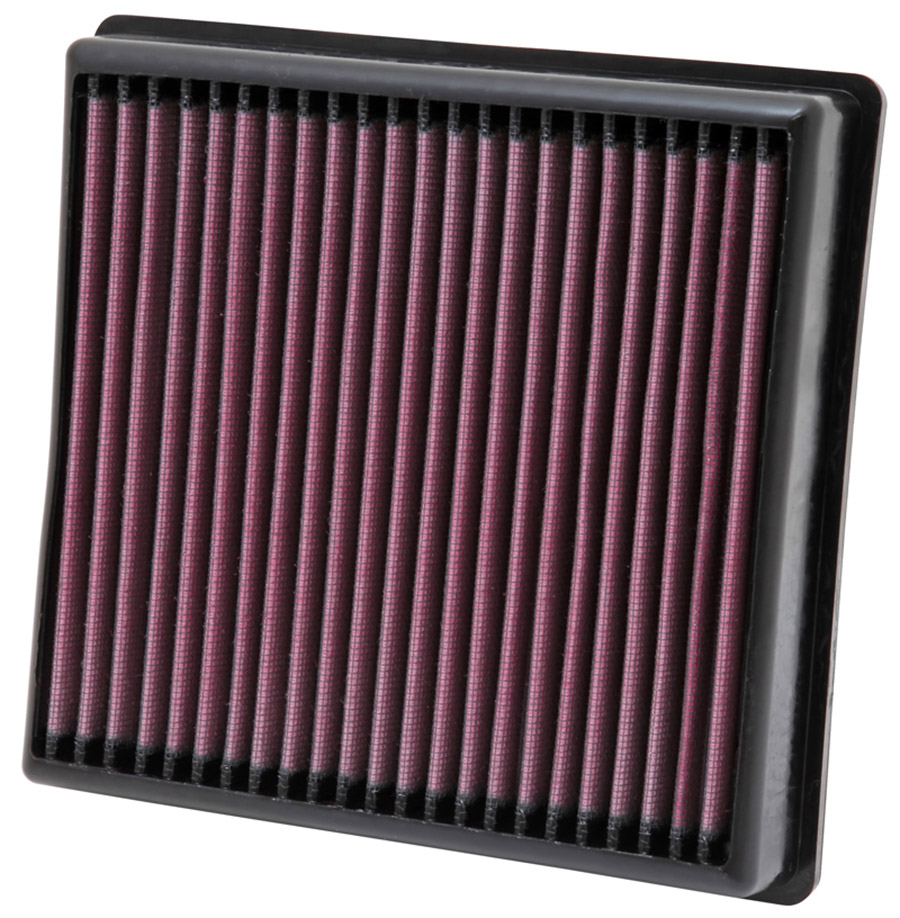
Performance Panel Filter
It’s almost undeniable that, starting from around 40-quid a pop, performance panel filters are one of the cheapest tuning mods available. Especially when you consider that they’re designed to be washable and reusable. Yep, you need never buy another stock paper filter again. Saving you a decent few quid every 10000-miles or so.
The other advantage of uprated panel filters of course, is that these are a direct-fit mod which takes literally seconds to install. It makes sense. Your stock filter is quickly replaceable during routine servicing, so the car manufacturers make them easy to swap out, just to ensure their main dealers can do the job in as little time as possible. This advantage translates directly to your performance filter. Being the same size and shape as the standard item, you simply open the airbox, launch the stock filter into the nearest bin, pop in the new one, shut the airbox and you’re good to go. Pretty easy right? In fact, we’ve had cars where it takes more time to find the bonnet catch than fit the filter!
So, with a performance panel filter you’ll get an easy upgrade in airflow for sure. However, it’s the airbox itself where you’ll see the main stumbling block for power tuning. The airbox will always offer a restriction to airflow itself. Unlike with a cone filter, a panel filter can only suck in the air that’s passing through the airbox.
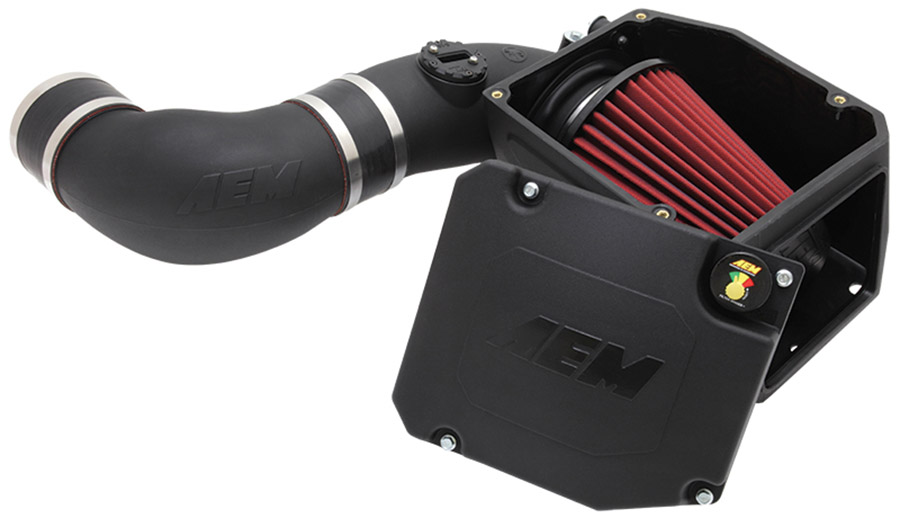
Airflow vs heat soak
Now, it’s a double-edged sword this one. Chiefly because your stock airbox is specifically designed to protect your air filter from heat. Hot air is less dense by volume than cold air; it contains less oxygen. And the oxygen is the good stuff you want to burn with your extra fuel to get more power. The trouble is that, in any tightly packed engine bay, the air around the filter is going to get hot. And this goes double when the car is stationary – there’s no cold air blasting through the front grille pushing out the warm air. It’s the same reason why you have a radiator fan on your car. Your radiator works extremely well when you’re barrelling along and getting plenty of airflow. When you’re stationary though, that’s when the fan needs to kick in to aid the cooling. It’s the same principle here.
The trouble is that car manufacturers don’t have a choice, they have to fit an air filter and the only way to protect it fully is with an airbox. Just so you’re not sucking in a load of hot air and actually losing power while you’re sitting in traffic. Even so, the airbox they fit will always pose a restriction to the potential airflow.
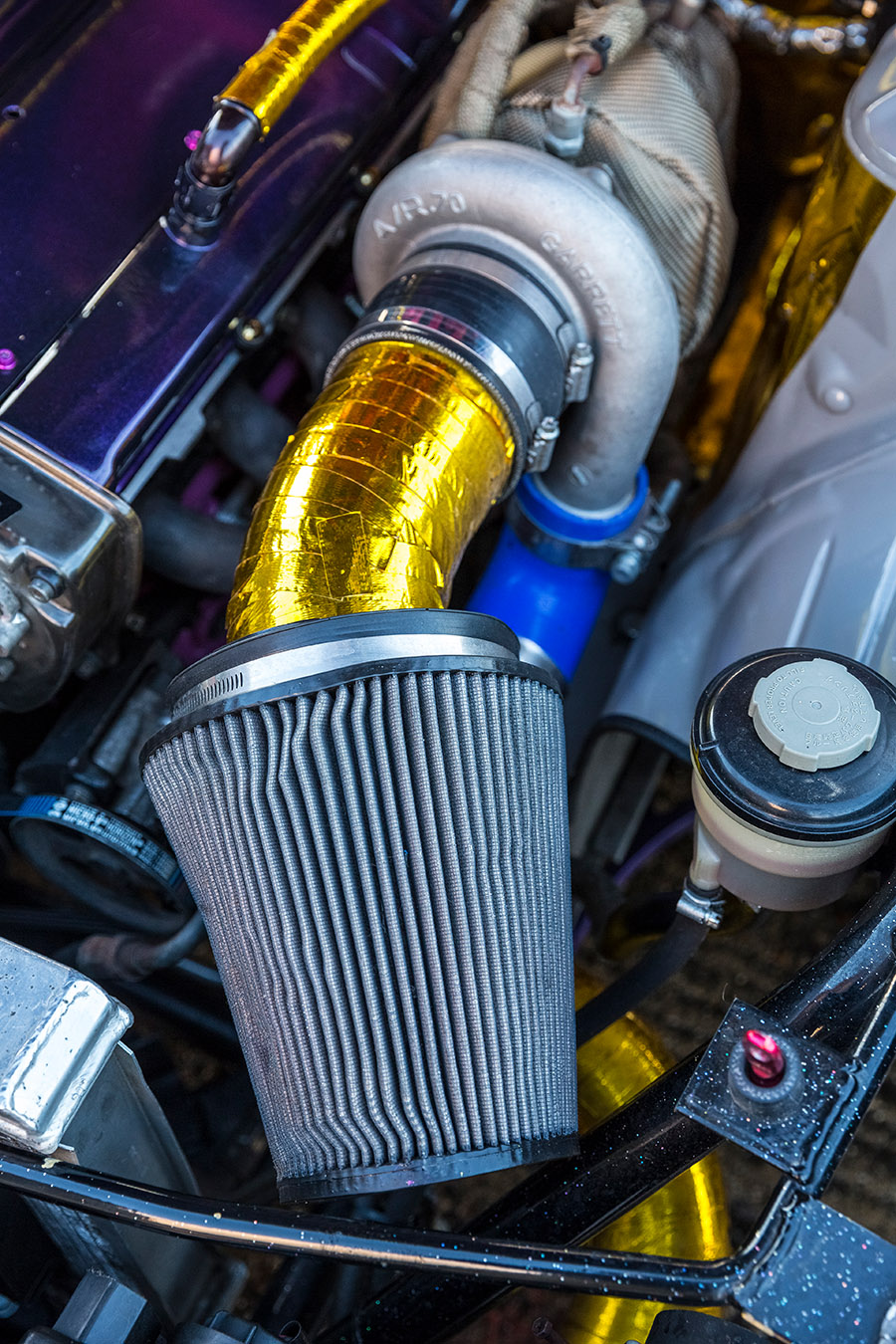
Performance Cone Filter
Open cone filters do two main jobs. First, they replace the whole airbox to free up that huge restriction. And second, they’re designed to be a shape that tends to offer a larger surface area than a panel filter. More surface area means more filter element with air passing through it, increasing the potential for maximum airflow. Basically, you’re sucking in all the air all the way around the cone, instead of channelling it from one restrictive source.
The first disadvantage of this of course, is that a cone will take a little longer to fit. First you need to rip out the airbox and then slide your cone filter snugly onto the original piping and get it all tightened up. It’s not much longer granted, but even so.
As you may have guessed though, the biggest issue with an open cone will always be the heat soak. When there’s no airflow through the bay, the hot engine will inevitably be heating up the air around your filter. So, you’ll always be at far more risk of sucking in warm air than you are with a panel filter hidden away in an airbox. In this way, a cone filter can not only offer less of a power hike than a panel, but it can actually lose you power over standard. With a basic cone setup, you’re only getting the power advantages when you’re moving along.
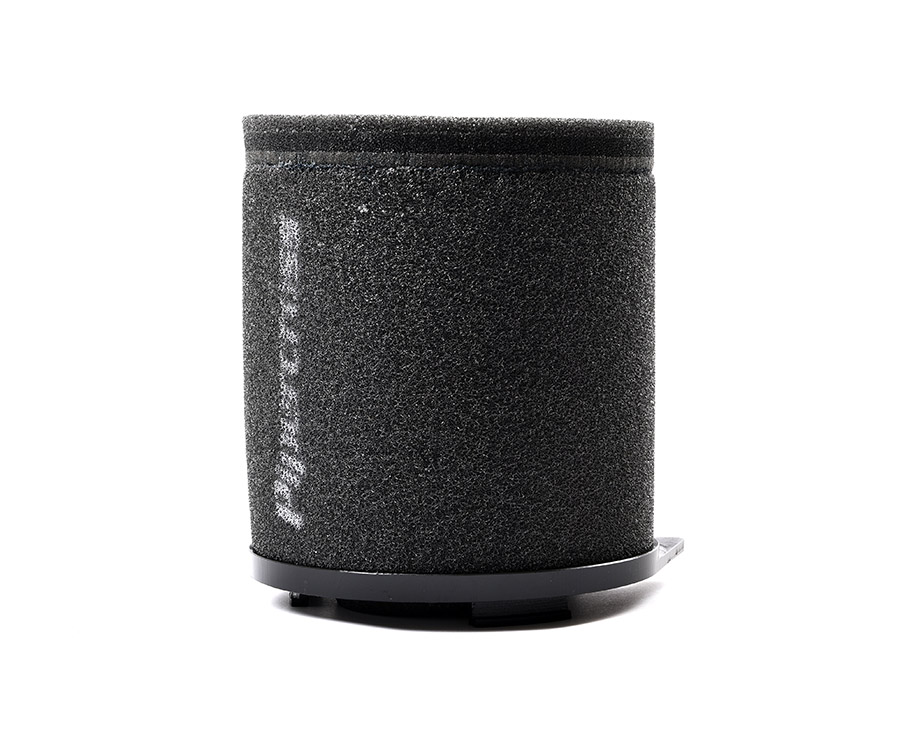
What’s the difference between a cone filter and an induction kit?
First of all, a basic cone filter is not a full-on induction kit. An induction kit (often called a cold air intake by the cool kids) will nearly always utilize a cone filter as part of the setup, but it will usually have a whole load of other piping designed to optimize the inlet tract at the same time. Having free-flowing piping straight to the engine comes with even more of an advantage in terms of more efficient airflow. That’s why one of these will cost you a pretty penny compared to a basic cone filter.
Many induction kits will also include a certain amount of heat shielding to help protect the filter from the big hot lump roaring away next door. Shields offer a barrier between the hot bits and the filter itself… although this only works up to a point. Having an open cone filter in any hot engine bay will inevitably mean sucking in more hot air than you would with a closed airbox. That’s why the manufacturer fitted the airbox in the first place, right?
Generally speaking, these kits will also contain a certain amount of cold air ducting, allowing you to direct the air from the front of the vehicle straight to the filter – say, from a grille or bumper vent. Again, all this is amazing while the car is moving, but it won’t do anything for smooth running when you’re sitting stationary. In this way it’s not only about application, but mostly how you use your car.
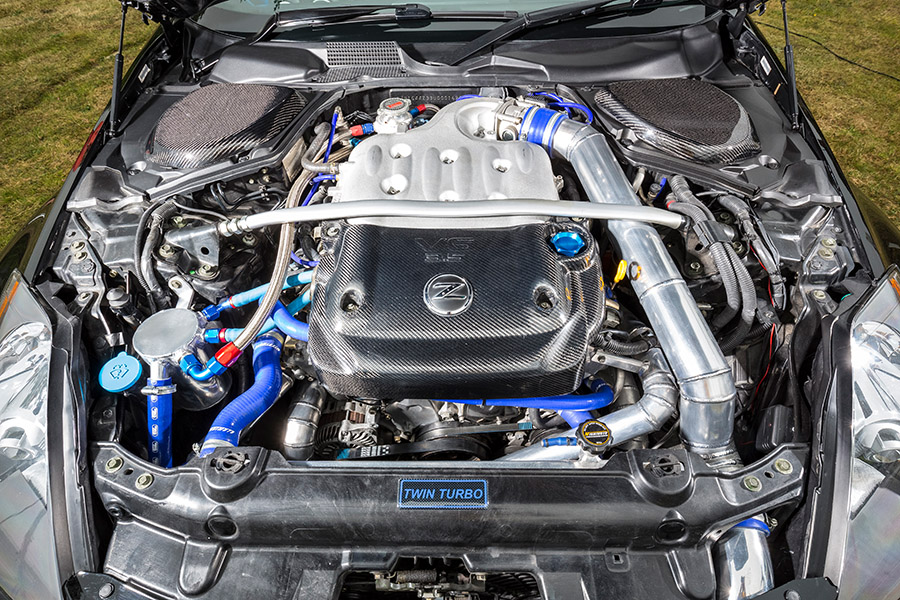
Filter Placement
The last part to consider is where your cone filter actually sits. Some induction kits will be specifically designed to relocate your filter away from the heat of the engine bay, placing it somewhere (such as in the bumper or grille) where it’s going to pick up the most cold, dense air. It’s a great idea that not only makes a difference to the quality of the air you’re sucking in while moving but keeps the charge temperatures down when you’re in traffic. In fact, as long as there’s no danger of sucking in water from puddles and such, and you don’t mind cleaning your filter a little more often, a remote filter can be a great solution. But again, the engineering is going to have an impact on your wallet.
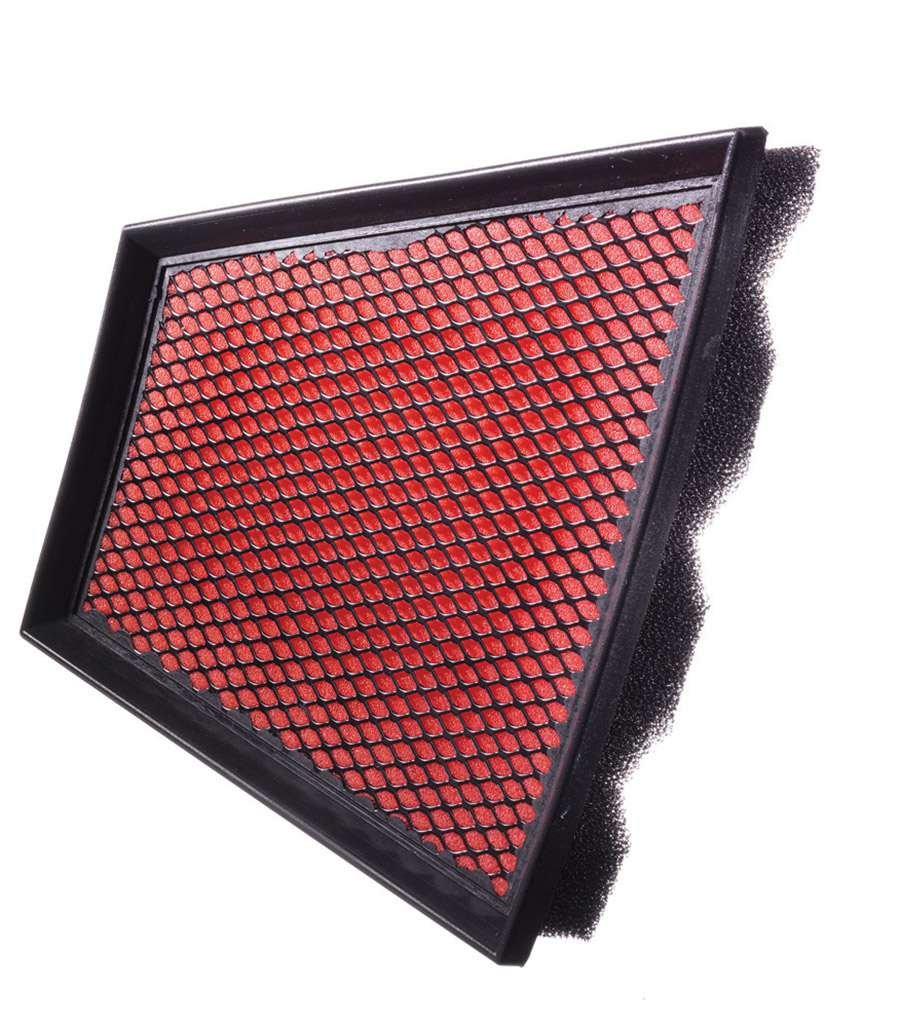
Verdict: Panel Filter vs Cone Filter
First of all, let’s put the money to one side for a moment. Although a basic panel filter will inevitably be a little cheaper than a basic cone filter upgrade, there’s not enough in it to see you go bankrupt. Both give great bang for your buck… quite literally. If, however, you’re looking into fitting a full-on induction kit which includes intake piping and a heat shield, then price will inevitably be a factor. The only person who can judge if it’s worth the outlay is you. Could the money be better spent elsewhere? Or will you need that extra airflow to support other mods down the line?
The number one rule when making your choice though, is that heat is the enemy. If you’re running a car with a tightly packed bay, and you spend half your day sitting in traffic, in many cases, a performance panel filter will be the most worthwhile upgrade. This means that you’ll get a little extra power, but your filter will remain protected from soaking up all the heat. Here you may want to save the extra cash for another tuning mod to compliment your filter, like a decent exhaust system or a stage one remap. At the very least you’ll be wanting a cone filter that’s placed well away from the engine.
Conversely, if you’re constantly on the move and keeping a good flow of fresh air through the bay (and ideally directed straight to your filter) then a cone filter provides more power. It’s a real no-brainer this one – B-roads, circuits, motorway driving; it doesn’t matter. If you’re always on the gas, you’ll usually get more power form a cone.
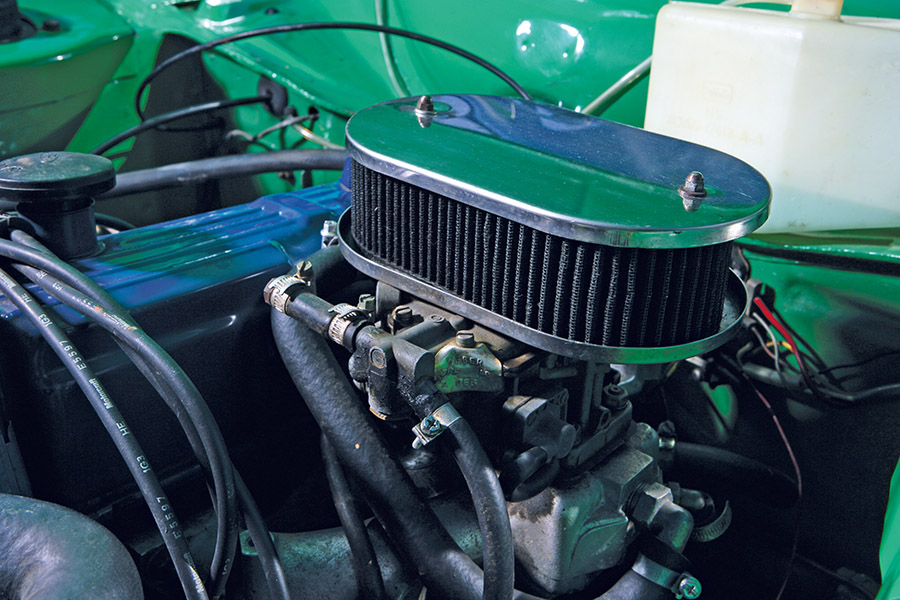
Maximum airflow
But, here’s the thing… At some point in the tuning process, the need for maximum airflow will always trump the need for heat protection. The thirst your engine has for oxygen will depend on other upgrades, especially when modifications like de-cats, custom maps and fueling mods come into play. Here you’ll need a cone filter just to get enough air in the engine, so you don’t have a choice. You’ll just have to do what you can in terms of directing cold air, shielding from heat with and clever filter placement.
Then again, if budget isn’t the main concern, you could always go for the best of both worlds with a performance air box kit. Many of the heavy hitters, such as K&N, Pipercross and AEM manufacture performance intake systems that utilize the surface area and free-flowing characteristics of a cone, but place them in a protective airbox that’s optimized for flow.
As with all the best tuning mods, the key is to find the right balance for the gains you’d like to achieve and exactly where you’ll be trying to use all those lovely horsepowers.
Words: Midge Burr
The post Is a Panel Filter or Cone Filter Best For Your Car? appeared first on Fast Car.
Leia Mais.